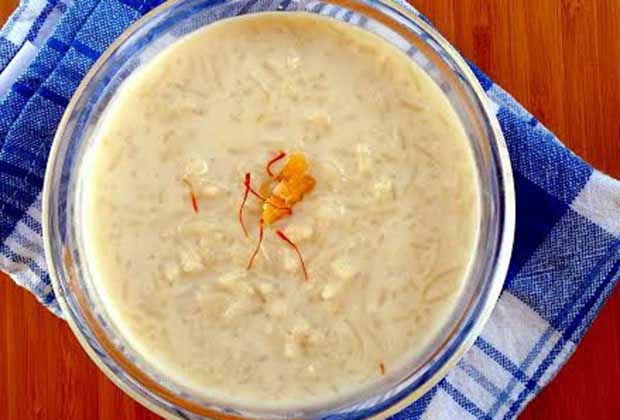The goodness of a Konkani rice & jaggery kheer
- By Shanti PetiwalaLoading...
- | 23 July 2015 2:11 PM IST
 X
X
 A rice pudding prepared with jaggery and saffron. Photo: Shanti Petiwala
A rice pudding prepared with jaggery and saffron. Photo: Shanti Petiwala
I don’t like sugar. Don’t get me wrong – I have a crazy sweet tooth, but I’d much rather prefer having something sweet with dates/ honey/ jaggery providing the sweetness instead of white sugar. While I’m not too fond of dates and honey doesn’t seem to provide the sweetness that some dishes crave, jaggery is the trusted companion. This gooey, sticky, unrefined, concentrated version of sugar cane (the same thing sugar is made of) is chock full of the goodness of minerals, roughage and cooling properties.
My earliest encounter with jaggery was post Diwali many years ago when my mum had made all sorts of faraal, and my dad had bought some Mysore Pak as well. I still remember going into the kitchen one afternoon after school and climbing up the kitchen counter and reaching into the shelf to take out what I thought was the Mysore Pak.
As I stuffed my mouth with the cubes of sweet brown goodness, it dawned on me that this tasted nothing like Mysore Pak; it didn’t taste of ghee, or have that toasted flavour of the besan; it was just pure sweetness!
Turned out that I was busy ODing on jaggery blocks! I’d learned my lesson and that experience put me off the ingredient for quite a while, till I went on to cook seriously more than 10 years later. Now, jaggery is my trusted ingredient in regular Indian cooking to balance out all those sharp, strong flavours; in Asian cooking to provide sweetness; and now in Indian desserts like kheer.
Kheer is the dish of the Gods, in my opinion. It is by far my favourite Indian dessert, and I can devour it in any form – rice kheer, payasam, firni, you name it! This dish of sweet cooked milk with dry fruits and rice or seviyan is nothing short of a delicious mélange of flavours and textures. Add to that the thick cream/malai that forms on the top along with the slightly golden bits that stick to the bottom of the pot – it’s a sure winner!
Anyway, last year I discovered – regretfully a tad late, I must admit – the beauty and variety of Chitrapur Saraswat cuisine, as you may know from this series I am doing on my blog. Of course, being from the community, the cuisine was an integral part of my life and is one of my favourites, but I had never really gone beyond what my mum and relatives would make.
Last year, I was going through our community cook book, the Rasachandrika, and discovered this gorgeous, simple, mellow rice kheer. It is supplemented with the goodness of jaggery and coconut milk with rice. Add a little saffron for flavour and colour and maybe a little crushed jaggery on the top and have warm or cold. It is delicious – take my word for it!
Recipe for Coconut and Jaggery Kheer
Ingredients
½ cup rice
2 cups water
¼ cup grated jaggery (I usually add it to taste since I am not too fond of extremely sweet dishes)
½ cup coconut milk (if you can get fresh milk, nothing like it, or else the store-bought variety works)
Pinch of salt
A few strands of saffron
Method
1. Roast the rice and grind coarsely. Cook it with the water till just done.
2. Now, add in the jaggery and mix well. Try not to break up too much of the rice.
3. Add the coconut milk, salt and let it simmer. (Note: The salt does not make it savoury – it just lifts the flavou and adds a new dimension)
4. Take some of the warm coconut milk liquid in a small bowl and steep the strands of saffron in it for a few minutes. Add the saffron to the kheer and turn off the gas.
5. You can serve it warm or cold.
A writer and editor by profession, my passion lies in food and exploring its horizons. It has always been my comfort, challenge and satisfaction. I absolutely love ingredients, which have been the muse to my writing and inspiration to my cooking. Through my blog Riot of Flavours, I talk about my world of cooking and eating and seek to promote my native cuisine the Chitrapur Saraswat Cuisine from Karnataka.
Follow Shanti on Twitter and Instagram @riotofflavours



